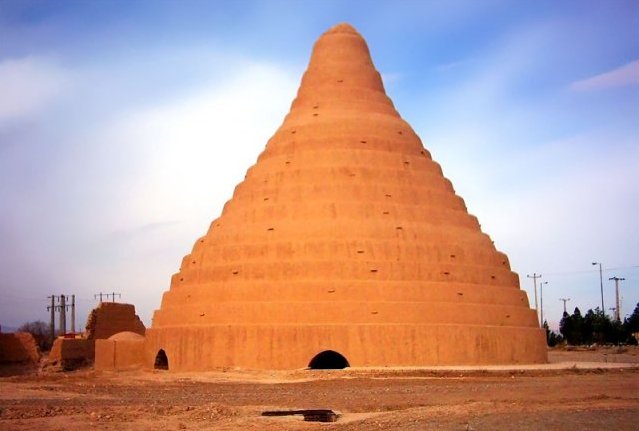Remarkable Ancient Windcatchers: Air Conditioning Systems Built Since Antiquity
A. Sutherland - AncientPages.com - Windcatchers are very old wind towers can be still found across the Middle East. The structures were created by ancient engineers to create natural ventilation in buildings.
Windcatchers have various designs, such as the uni-directional, bi-directional, and multi-directional. The original windcatchers in Iran, however, are normally multi-directional with two to eight openings at the top to catch the breeze from any direction.
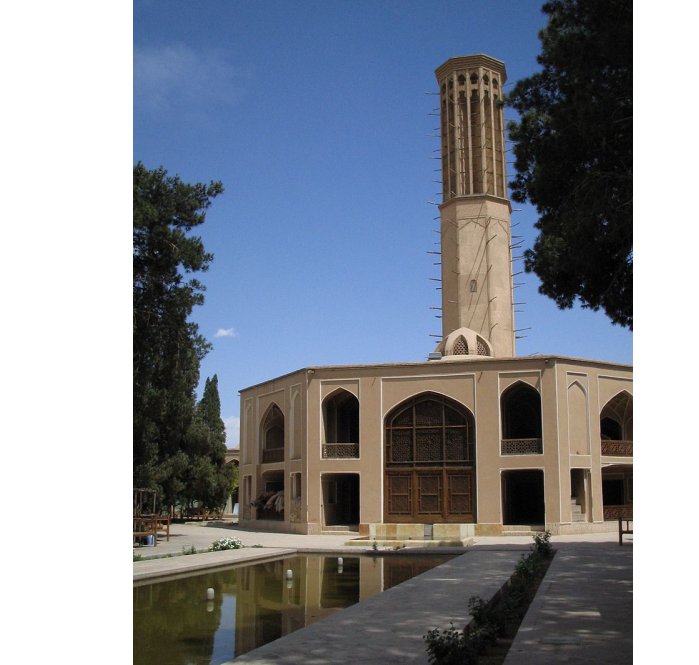
The windcatcher of Dowlatabad in Yazd, Iran—one of the tallest existing windcatchers. Image credit: Fabienkhan
As we have previously wrote in one of our articles, ancient Persian engineers mastered the technique of storing ice in the middle of summer in the desert. In order to accomplish this, they constructed ancient structures, called yakhchals that should not be confused with pyramids or ziggurats.
The yakhchals are in fact ancient “refrigerators” used to store ice and other food items.
The ancient engineers of the Middle East were highly skilled and also built windcatchers that we can still admire today. The ancient windcatchers appear throughout the Middle East.
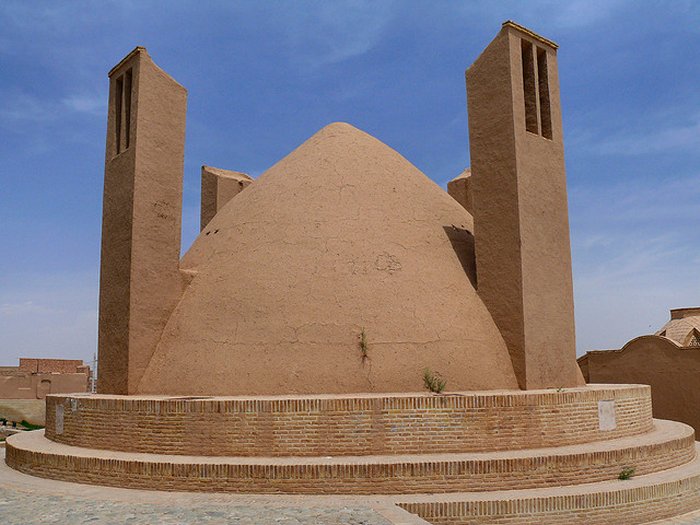
Image Credit Flickr User Dynamosquito
We find them in Iran, Afghanistan and Pakistan and they have all traditional Persian-influenced architecture. The windcatchers are also known in traditional Egyptian architecture in Ancient Egypt as demonstrated in Windcatchers on the Pharonic house of Neb- Ammun, Egypt, 19th Dynasty, c.1300 BC, British Museum.
It was revived in Neoislamic architecture as the works of Hassan Fathy. In Egypt the windcatchers are known as "Malqaf".
See also:
10 Remarkable Advanced Ancient Technologies Ahead Of Their Times
Proof Of Superior Ancient Technology – Found In All Four Corners Of The World
Yakhchals: Ingenious Ancient ‘Refrigerators’ Could Store Ice In The Hot Desert
More Advanced Ancient Technology
The reason for constructing these ancient wind towers is related to the climate in the region. Towns centered on desert oases tend to be packed very closely together with high walls and ceilings, maximizing shade at ground level. The heat of direct sunlight is minimized with small windows that face away from the sun.
Serving as ventilation systems they have given the people of the Middle East air conditioning for thousands of years.
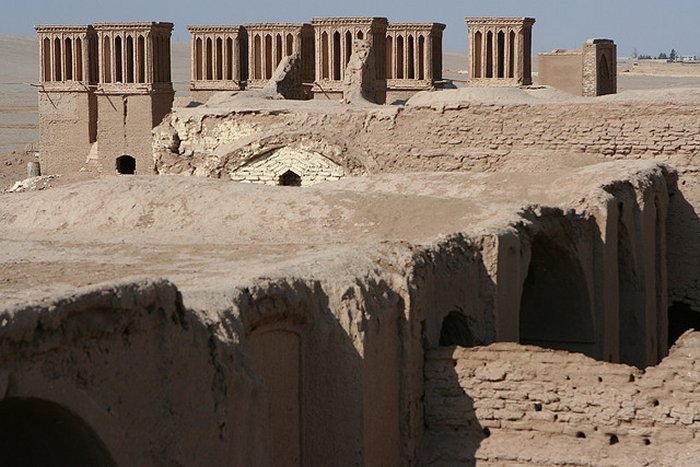
Image Credit Flickr User Ninara
They function in one of three ways. Some direct the airflow downwards and use direct wind entry. Others direct airflow up either using a temperature gradient assisted either by the sun or the wind.
Despite their very old origin, windcatchers may even provide a solution for some very modern architectural problems.
The ancient windcatcher approach has been utilized in Western architecture, such as in the visitor center at Zion National Park, Utah, where it functions without the addition of mechanical devices in order to regulate temperature.
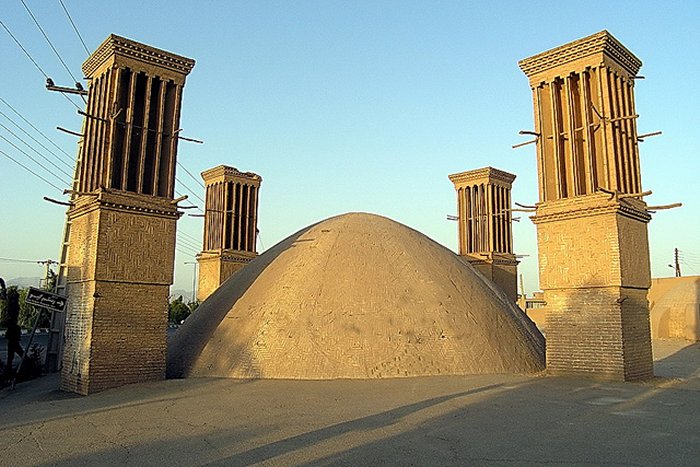
Image Credit Flickr User Pilar Torres
The construction design of windcatchers vary much but they all perform a similar key function: channeling prevailing winds trapped in vents above the roofs of buildings down to cool and ventilate the rooms located below.
They have been built since antiquity but their ingenious design can still contribute with ideas, necessary in our modern society.
Written by – A. Sutherland - AncientPages.com Senior Staff Writer
Copyright © AncientPages.com All rights reserved. This material may not be published, broadcast, rewritten or redistributed in whole or part without the express written permission of AncientPages.com
More From Ancient Pages
-
 Perfectly Preserved Roman Tombs Discovered Near City Of Capua Where Spartacus Trained As Gladiator
Archaeology | Jan 7, 2021
Perfectly Preserved Roman Tombs Discovered Near City Of Capua Where Spartacus Trained As Gladiator
Archaeology | Jan 7, 2021 -
 On This Day In History: Fire Of Skopje Started Intentionally – On Oct 26, 1689
News | Oct 26, 2016
On This Day In History: Fire Of Skopje Started Intentionally – On Oct 26, 1689
News | Oct 26, 2016 -
 Scathach – The Shadowy One – Legendary Martial Arts Teacher Who Trained Cuchulainn And Other Warriors
Featured Stories | Mar 4, 2019
Scathach – The Shadowy One – Legendary Martial Arts Teacher Who Trained Cuchulainn And Other Warriors
Featured Stories | Mar 4, 2019 -
 Klerksdorp Spheres – Controversial And Out-Of-Place In Time Metallic Spheres From South Africa
Artifacts | Apr 8, 2017
Klerksdorp Spheres – Controversial And Out-Of-Place In Time Metallic Spheres From South Africa
Artifacts | Apr 8, 2017 -
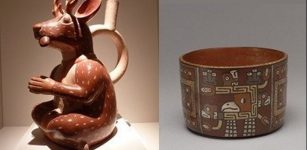 Genes And Languages: Development Of Pre-Incan Culture In Central Andes
News | Oct 26, 2020
Genes And Languages: Development Of Pre-Incan Culture In Central Andes
News | Oct 26, 2020 -
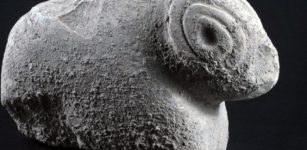 Two Stone Age 9,500-Year-Old Artifacts Unearthed In Tel Motza
Archaeology | Sep 3, 2012
Two Stone Age 9,500-Year-Old Artifacts Unearthed In Tel Motza
Archaeology | Sep 3, 2012 -
 LIDAR Discovers Huge Abandoned Zapotec City With Temples, And Ball Courts In Oaxaca, Mexico
Archaeology | Jan 30, 2025
LIDAR Discovers Huge Abandoned Zapotec City With Temples, And Ball Courts In Oaxaca, Mexico
Archaeology | Jan 30, 2025 -
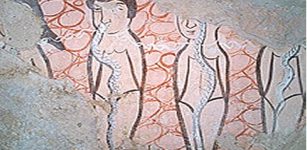 Ancient Monastery In The Middle Of ‘Syria’s Stonehenge’ – Underground Caves, Tombs, Stone Circles Older Than Pyramids
Civilizations | Nov 13, 2015
Ancient Monastery In The Middle Of ‘Syria’s Stonehenge’ – Underground Caves, Tombs, Stone Circles Older Than Pyramids
Civilizations | Nov 13, 2015 -
 Power Of Water In Beliefs Of Ancient Cultures
Featured Stories | Apr 9, 2019
Power Of Water In Beliefs Of Ancient Cultures
Featured Stories | Apr 9, 2019 -
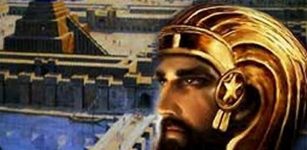 Legacy Of The Ancients: Cyrus The Great Cylinder – The Charter Of Human Rights
Featured Stories | Feb 17, 2014
Legacy Of The Ancients: Cyrus The Great Cylinder – The Charter Of Human Rights
Featured Stories | Feb 17, 2014 -
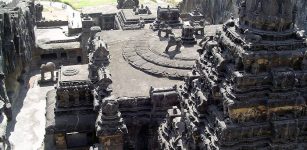 Cannabis Protected India’s Famous Ellora Caves From Decay For 1,500 Years
Archaeology | Mar 12, 2016
Cannabis Protected India’s Famous Ellora Caves From Decay For 1,500 Years
Archaeology | Mar 12, 2016 -
 Rare Bes Mugs Reveal Ancient Egyptians Drank Hallucinogenic Cocktails During Rituals
Archaeology | Nov 18, 2024
Rare Bes Mugs Reveal Ancient Egyptians Drank Hallucinogenic Cocktails During Rituals
Archaeology | Nov 18, 2024 -
 Baffling North American Ancient Skulls Contradict Historical Timelines And Mainstream Theories
Ancient Mysteries | Jun 11, 2020
Baffling North American Ancient Skulls Contradict Historical Timelines And Mainstream Theories
Ancient Mysteries | Jun 11, 2020 -
 Mysterious Fossilized Antarctic Forest May Offer Evidence Of The Great Flood – But Some Facts Speak Against This Theory
Archaeology | Dec 27, 2017
Mysterious Fossilized Antarctic Forest May Offer Evidence Of The Great Flood – But Some Facts Speak Against This Theory
Archaeology | Dec 27, 2017 -
 Number ‘Seven’: Mystical Number Of The Universe And One Of The Most Sacred Numbers
Ancient Symbols | Feb 14, 2017
Number ‘Seven’: Mystical Number Of The Universe And One Of The Most Sacred Numbers
Ancient Symbols | Feb 14, 2017 -
 Fragments Of Oldest Pharaonic Military Fortress Unearthed In Egypt’s North Sinai
Archaeology | May 20, 2019
Fragments Of Oldest Pharaonic Military Fortress Unearthed In Egypt’s North Sinai
Archaeology | May 20, 2019 -
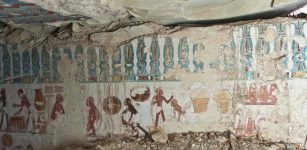 An Intact 4,000-Year-Old Burial Chamber Found In Aswan
Archaeology | Mar 28, 2017
An Intact 4,000-Year-Old Burial Chamber Found In Aswan
Archaeology | Mar 28, 2017 -
 Legacy Of The Iconic Sycamore Gap Tree – Historical Landmark At Hadrian’s Wall
Featured Stories | Mar 28, 2024
Legacy Of The Iconic Sycamore Gap Tree – Historical Landmark At Hadrian’s Wall
Featured Stories | Mar 28, 2024 -
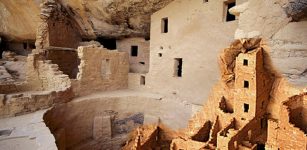 Anasazi: Sophisticated Civilization That Disappeared Or Evolved Into American Indians Of Southwest
Civilizations | Dec 3, 2016
Anasazi: Sophisticated Civilization That Disappeared Or Evolved Into American Indians Of Southwest
Civilizations | Dec 3, 2016 -
 Nabopolassar: Father Of Nebuchadnezzar II And King Of Babylon Rose To Power Thanks To His Dedication To Gods Nabu And Marduk
Featured Stories | Jan 11, 2019
Nabopolassar: Father Of Nebuchadnezzar II And King Of Babylon Rose To Power Thanks To His Dedication To Gods Nabu And Marduk
Featured Stories | Jan 11, 2019

